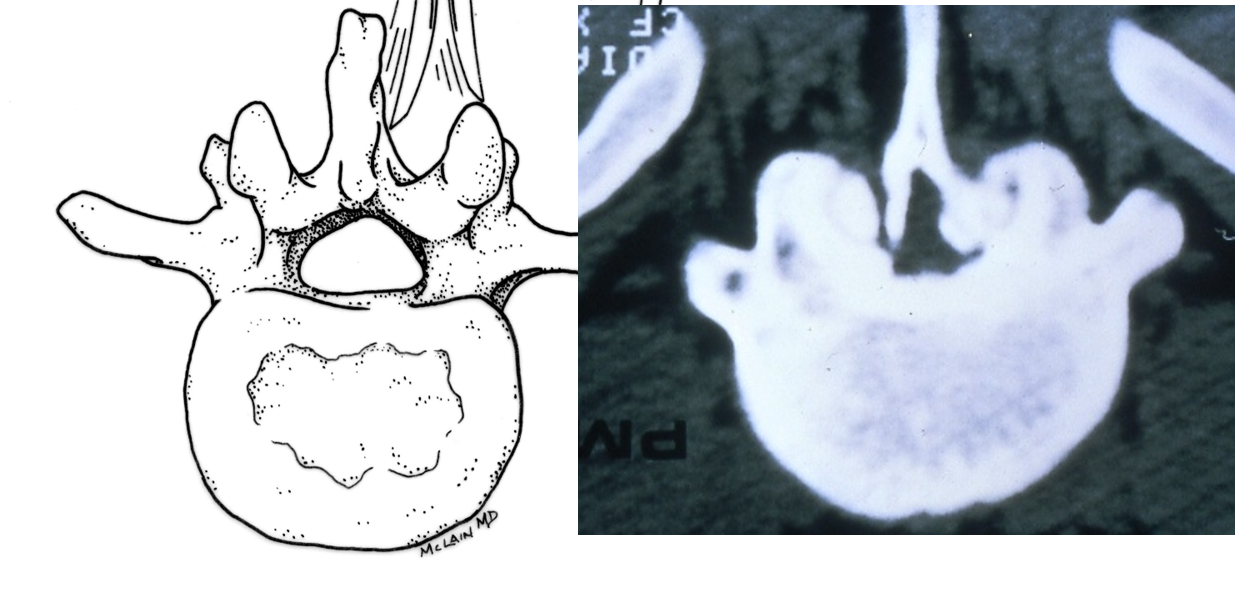When you’re sitting down, you feel fine. A little back pain but no problems. And when you first get up, you’re ok too. But over the last year you’ve noticed that you can’t walk as far as you used to, that your legs start to tingle and feel funny if you have to stand too long in one place,and that – unless you lean on the shopping cart – you just can’t get around the market anymore. Is this what getting old feels like!?? No, this sounds more like Lumbar Spinal Stenosis, a problem that lots of older patients have to cope with. It’s common in even my most active patients from age 60 up. However, unlike old age, this is a problem that’s fixable. The symptoms of leg pain, numbness and tingling, and progressive weakness, usually brought on by walking or prolonged standing, are classic for this condition, which is caused by a progressive narrowing of the lumbar spinal canal. This narrowing is usually caused by bone spurs and disc bulges or protrusions that build up over the years, and which eventually take up so much of the spinal space that the nerves start to get “choked off”. This happens slowly so symptoms may not be appreciated early on, and often it’s not until walking and standing tolerance are severely limited that patients realize something’s wrong. Symptoms initially seem to be a problem caused by walking too much or just being on your feet too long.
“ Doc, I feel fine when I first get going. But if I have to stand in one spot for any length of time, there comes a point where I feel like I’ve got to either sit down or fall down!” This is because the upright position of the spine when we stand, or extend our lumbar spine, takes up a little bit of the remaining room the nerves need to continue functioning. If you hold that position too long, its similar to cutting off the circulation to your foot – the legs tend to feel woody, tingling, or painful and weak. But, your limbs aren’t getting weak per se – they just aren’t getting normal input when you are in that upright position. Your muscles may start strong but they tend to fatigue very quickly. “I stay active. I still walk for exercise. I walk two miles every day. But I know a spot every 500 feet where I can sit down if I need to!” And, as the compression gets worse, the symptoms come on more quickly and normal daily activities can become very difficult. Bending forward or sitting down gives the spinal canal a little extra room and the symptoms go away. “I can ride my exercise bike for two hours, no problem, but I can’t walk to my mailbox!” If the condition is untreated, symptoms become more severe and constant and eventually no position is very comfortable, which is when my most stoic patients finally come in. Medical management, injection therapy, and PT can help, and I usually work with an expert group of pain management specialists, but once the nerve compression gets to a certain point, physically decompressing the nerves, with a laminectomy or laminotomy, is the only reliable solution. The good news? You are not doomed!! This is one of those conditions that responds very well to surgical care, which can often be provided on an outpatient basis. After surgery, most patients do benefit from a course of physical therapy and continued nonoperative back care. If you have a chiropractor or physical therapist that you like to work with, let your surgeon know so they can stay in the loop, and help you get back to your best function. For more information on spinal stenosis and the surgeries that can treat it, check out these other educational sites or browse for other links on my website at www.spinesurgerycleveland.com. What questions can I answer for you? Comment below, be sure to like and share this content if you found it helpful!
0 Comments
Leave a Reply. |
Details
AuthorI'm Dr. Rob McLain. I've been taking care of back and neck pain patients for more than 30 years. I'm a spine surgeon. But one of my most important jobs is... Archives
January 2024
Categories |

 RSS Feed
RSS Feed